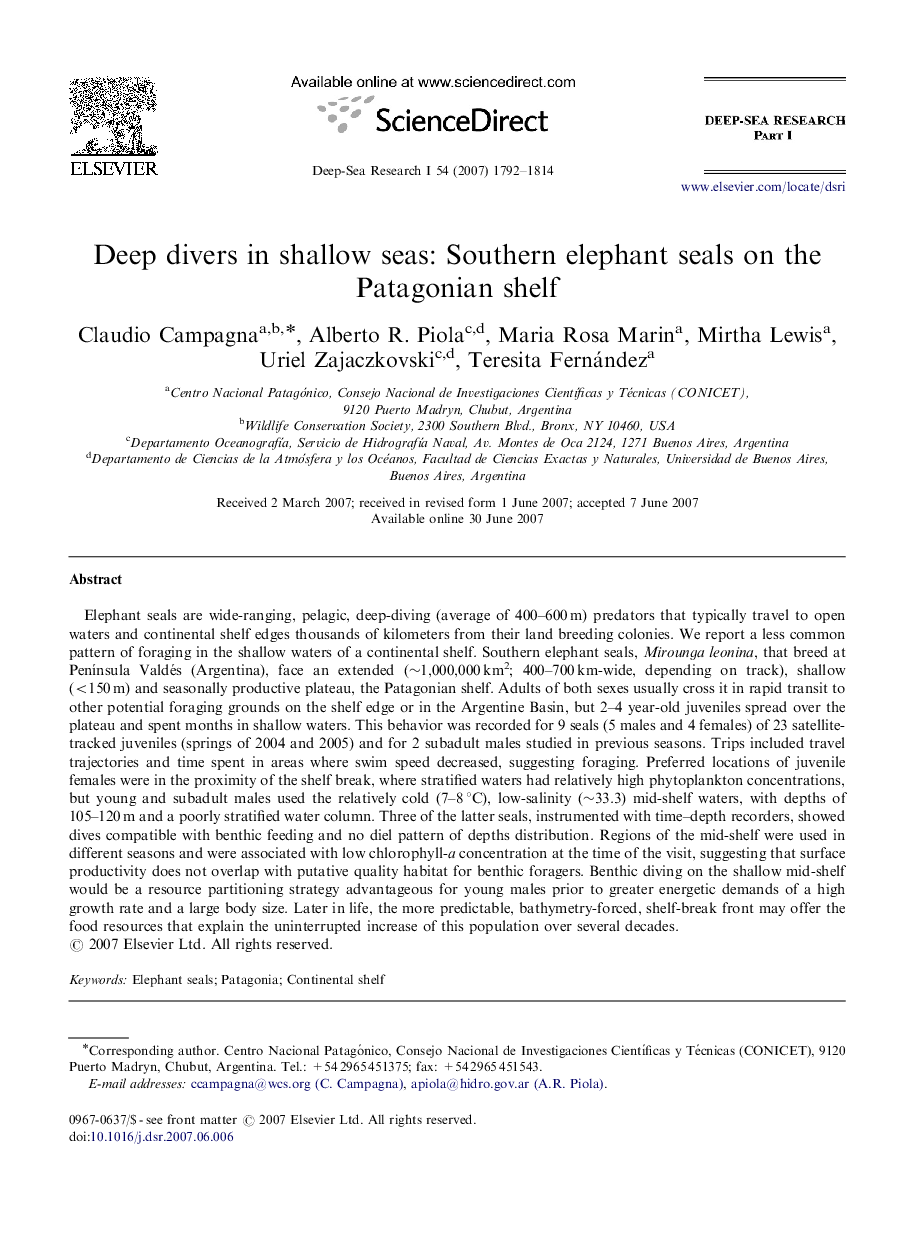| کد مقاله | کد نشریه | سال انتشار | مقاله انگلیسی | نسخه تمام متن |
|---|---|---|---|---|
| 4535619 | 1326123 | 2007 | 23 صفحه PDF | دانلود رایگان |

Elephant seals are wide-ranging, pelagic, deep-diving (average of 400–600 m) predators that typically travel to open waters and continental shelf edges thousands of kilometers from their land breeding colonies. We report a less common pattern of foraging in the shallow waters of a continental shelf. Southern elephant seals, Mirounga leonina, that breed at Península Valdés (Argentina), face an extended (∼1,000,000 km2; 400–700 km-wide, depending on track), shallow (<150 m) and seasonally productive plateau, the Patagonian shelf. Adults of both sexes usually cross it in rapid transit to other potential foraging grounds on the shelf edge or in the Argentine Basin, but 2–4 year-old juveniles spread over the plateau and spent months in shallow waters. This behavior was recorded for 9 seals (5 males and 4 females) of 23 satellite-tracked juveniles (springs of 2004 and 2005) and for 2 subadult males studied in previous seasons. Trips included travel trajectories and time spent in areas where swim speed decreased, suggesting foraging. Preferred locations of juvenile females were in the proximity of the shelf break, where stratified waters had relatively high phytoplankton concentrations, but young and subadult males used the relatively cold (7–8 °C), low-salinity (∼33.3) mid-shelf waters, with depths of 105–120 m and a poorly stratified water column. Three of the latter seals, instrumented with time–depth recorders, showed dives compatible with benthic feeding and no diel pattern of depths distribution. Regions of the mid-shelf were used in different seasons and were associated with low chlorophyll-a concentration at the time of the visit, suggesting that surface productivity does not overlap with putative quality habitat for benthic foragers. Benthic diving on the shallow mid-shelf would be a resource partitioning strategy advantageous for young males prior to greater energetic demands of a high growth rate and a large body size. Later in life, the more predictable, bathymetry-forced, shelf-break front may offer the food resources that explain the uninterrupted increase of this population over several decades.
Journal: Deep Sea Research Part I: Oceanographic Research Papers - Volume 54, Issue 10, October 2007, Pages 1792–1814